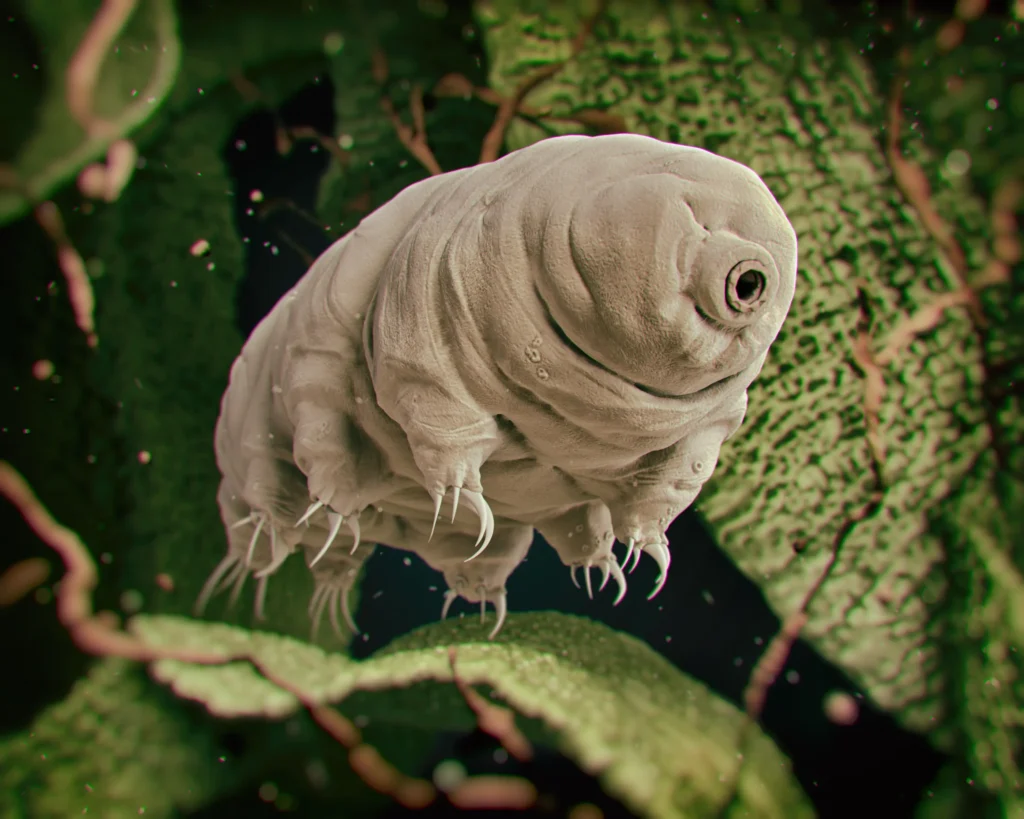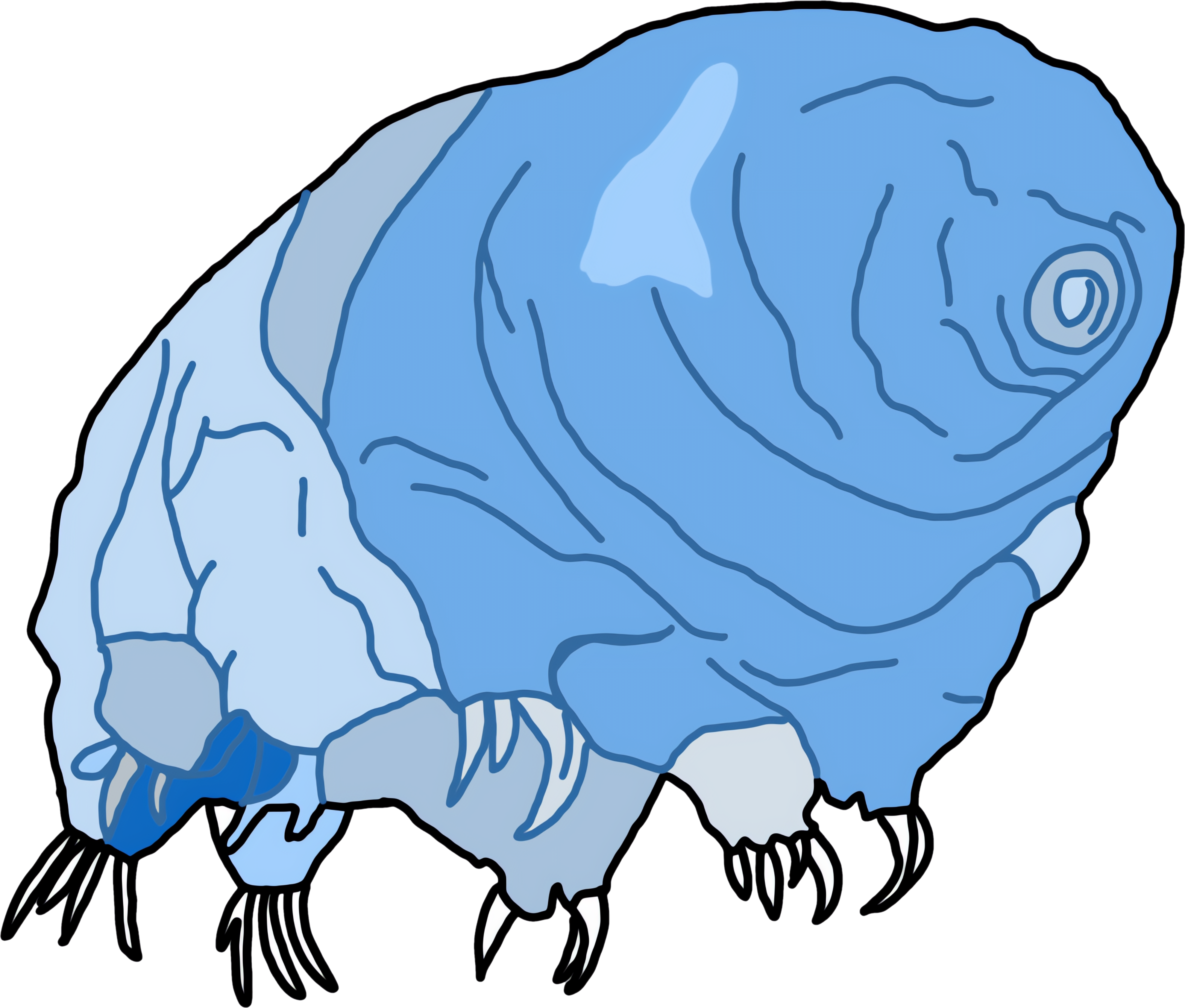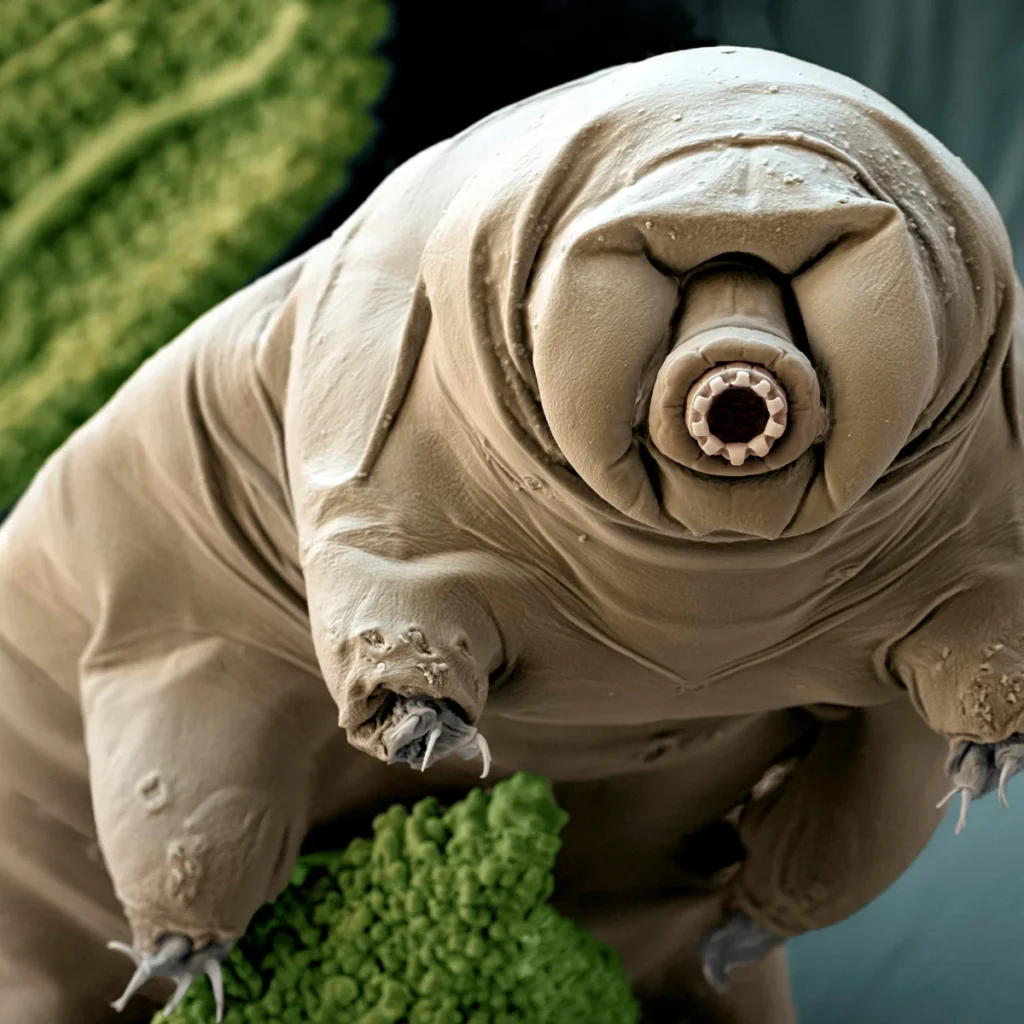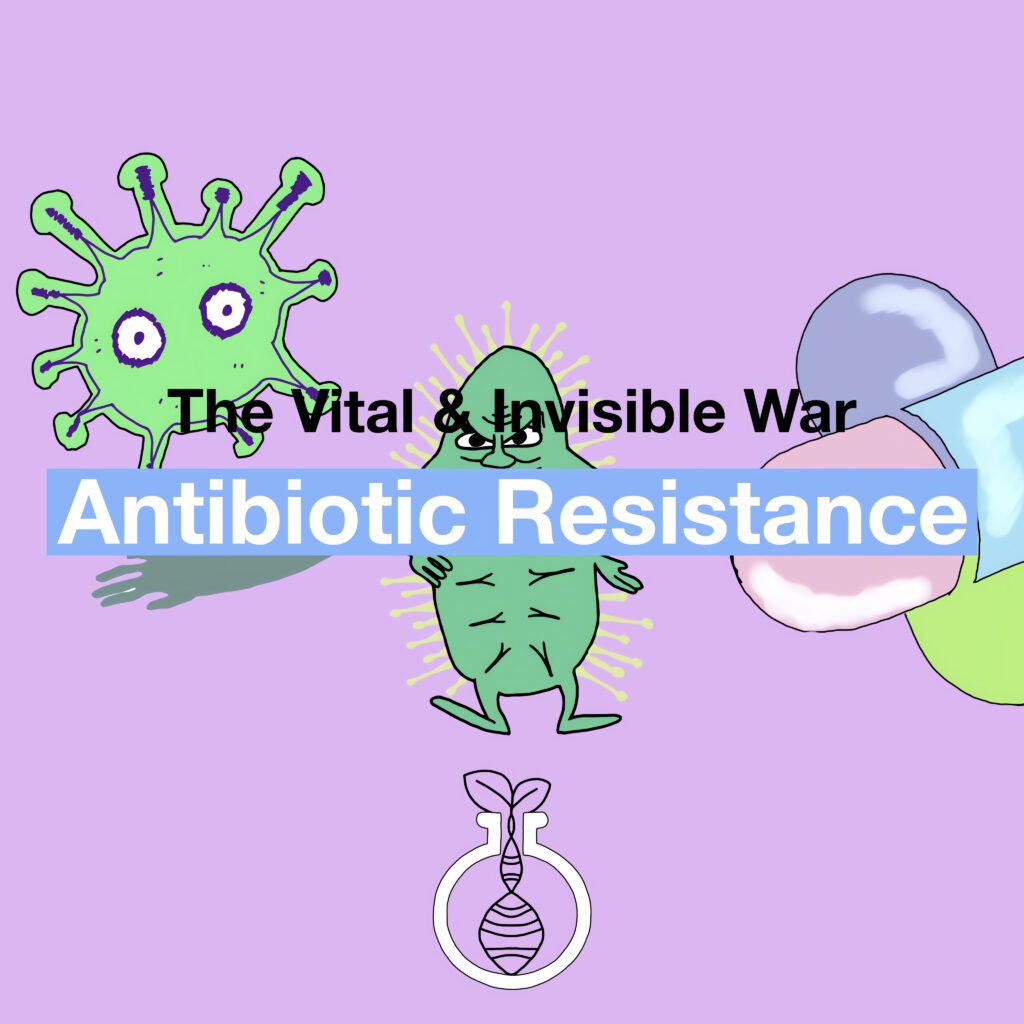Imagine a creature so small that hundreds can fit on the head of a pin. Now imagine if this creature could survive in space, volcanic heat, Antarctic cold, deep-sea pressure, and radiation levels that wipe out most other life forms. Welcome to the very real, very strange world of the tardigrade, also called the water bear. These microscopic animals are among nature’s most resilient survivors.
Let’s literally zoom in and take a stroll through the life of this small, tenacious titan.

A Face Only a Microscope Could Love
Tardigrades measure less than a millimeter in length making them invisible to the naked eye. Viewed under a microscope, though, they reveal an alien-like charm. Their chubby, segmented bodies and eight stubby legs tipped with little claws give them a cartoonish quality, like animated gummy bears in battle armor. Their faces feature a tubular mouthpart, or stylet, used to pierce into plant cells, algae, or tiny invertebrates to suck out their fluids.
Despite their softness, their outer layer (the cuticle) offers a degree of protection and is periodically shed as they grow. Their anatomy is simple (no heart, lungs, or complex organs) but highly effective. In their microcosmic world, simplicity is strength.

Born Survivors
Tardigrades can be found almost anywhere on Earth: from polar ice sheets to deep-sea trenches, in rainforests, deserts, and even in your backyard. Their only real requirement is moisture, not because they breathe water, but because they rely on it to stay metabolically active. When water is present, tardigrades continue their microscopic lives; nurturing, multiplying, and exploring.
But when conditions get harsh, they don’t run away or die. Instead, they enter a state called cryptobiosis and dry themselves until they resemble a crumpled ball called a tun. In this case, their metabolism drops to less than normal and they can survive without water for years or even decades. When the humidity returns, they are rehydrated as if time had stopped, and they resume where they left off.

Space Bears?
In 2007, tardigrades became the first animals to survive direct exposure to outer space. As part of the European Space Agency’s FOTON-M3 mission, scientists exposed them to the vacuum of space and solar radiation. While most organisms would have been destroyed within seconds, many of the tardigrades survived the ordeal and some even managed to reproduce once back on Earth.
What makes this so impressive is that space is the ultimate life-killer: no oxygen, no pressure, intense radiation, and extreme temperatures. Yet these creatures emerged with minimal damage. It wasn’t a one-off fluke either other space missions have since confirmed similar results.
The implications are profound. If these tiny animals can survive the journey through space, it raises fascinating questions about the possibility of life surviving on meteorites or being transported between planets.
How Do They Do It?
Tardigrades aren’t indestructible in the superhero sense they can be killed under the right conditions. But their suite of survival strategies is unparalleled.
One key trick involves trehalose, a sugar that helps protect their cells during dehydration by forming a glass-like matrix that stabilizes proteins and membranes. They also produce a unique protein called Dsup (short for “damage suppressor”) that shields their DNA from radiation damage, a mechanism scientists are only beginning to understand.
When entering cryptobiosis, tardigrades effectively shut themselves down, retracting their legs and losing up to 95% of their body water. Their DNA becomes more tightly packed, cellular activity nearly halts, and a gel-like substance replaces the water in their tissues. In this state, they are practically invulnerable to temperature extremes, radiation, and pressure changes.

Why Should We Care?
Beyond their status as biology’s ultimate survivors, tardigrades offer real-world applications. Scientists are studying their stress-resistant proteins to learn how to protect human DNA from radiation potentially useful in cancer treatments or during long-duration space missions.
In agriculture, understanding how tardigrades withstand dehydration could help develop drought-resistant crops. And in medicine, their ability to enter suspended animation could inspire new methods of preserving biological materials like vaccines, organs, or blood for longer periods without refrigeration.
They may be tiny, but the lessons we learn from them could be massive.
We got inspired by those articles to create these contents


My name is Ceyda Çelik, I am a passionate molecular biology and genetics student at Başkent University and also content writer for Biologyto. With a deep interest in the natural world and scientific exploration, I aim to share engaging, informative content that makes biology accessible and exciting for everyone. I’m dedicated to helping readers discover the wonders of life through science.





